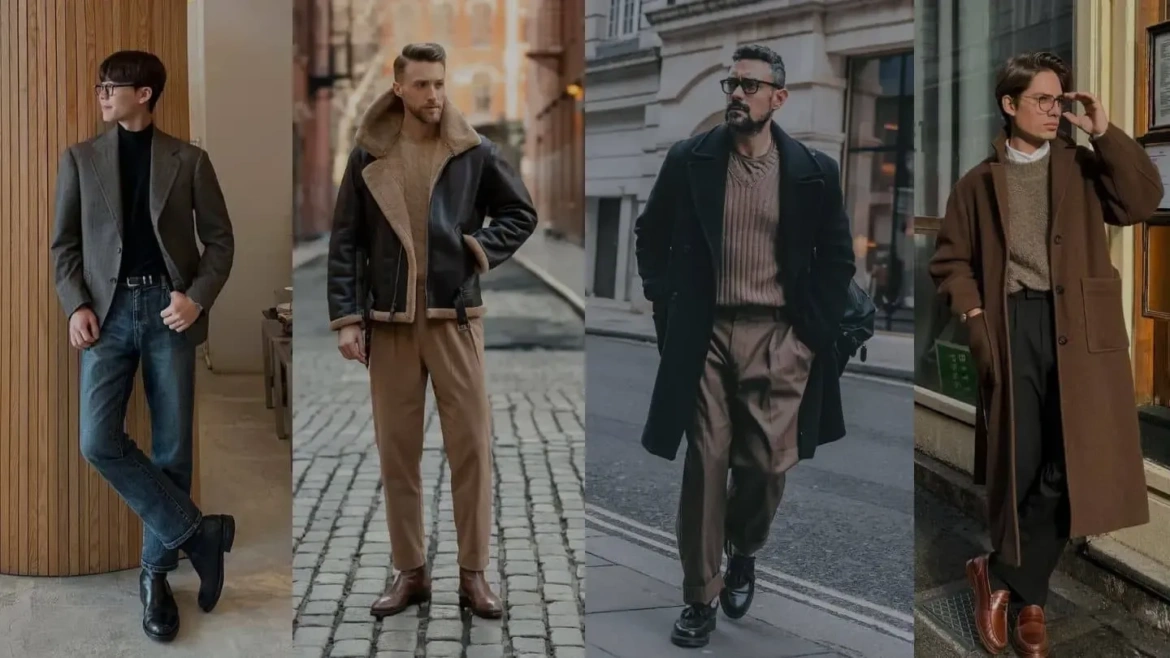Before we explore the specifics, let’s understand the essence of the Old Money Outfit. This men’s style goes beyond mere fashion—it is a lifestyle rooted deeply in tradition and heritage. It embodies enduring values and principles passed down through generations, marked by timeless elegance and discreet luxury. Often linked to the aristocracy or those with inherited wealth, this aesthetic favors quality over quantity, choosing classic, impeccably tailored garments and subtle yet fine accessories.
The Old Money Outfit isn’t just about what you wear; it’s about carrying oneself with dignity, practicing good manners, and maintaining social grace. It promotes a lifestyle that appears permanent and sophisticated, stressing that true luxury lies not in overt displays of wealth but in the preservation of age-old traditions and values. Adopting the Old Money Outfit means embracing the refined gentility and poised demeanor of a bygone era.
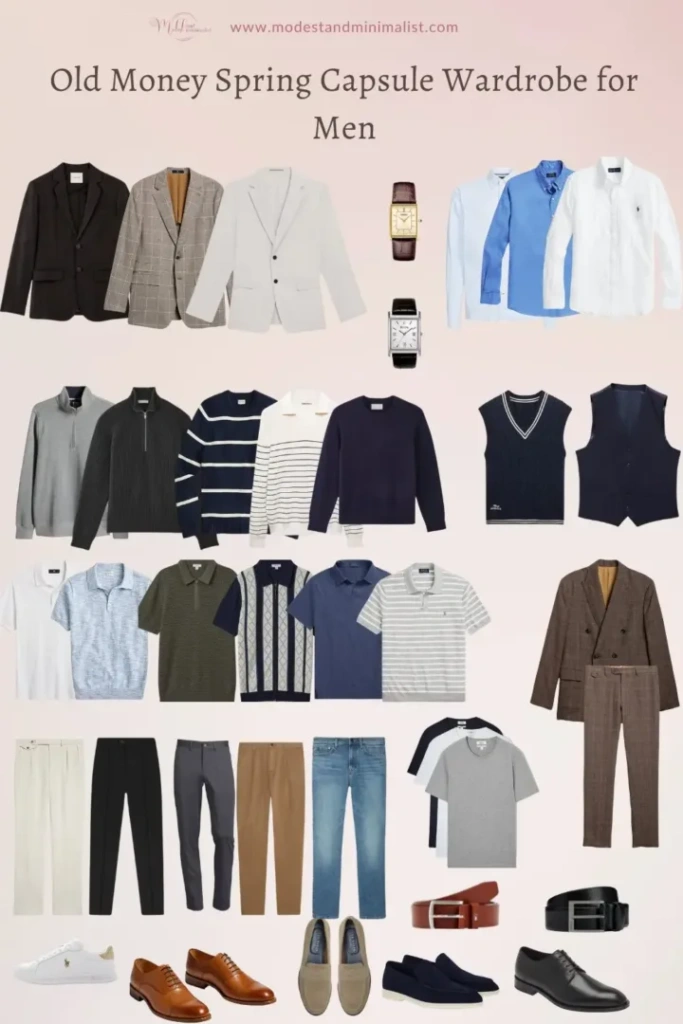
Essential Clothing Pieces
Suits: The well-tailored suit is the cornerstone of the Old Money men’s wardrobe. Made from premium materials like wool and tweed, these suits aren’t just clothing; they are a statement of heritage and understated luxury. The key lies in the fit—meticulously tailored to flatter your physique while exuding an air of timeless sophistication. It’s all about the silhouette: sharp, structured, and seamlessly perfect.
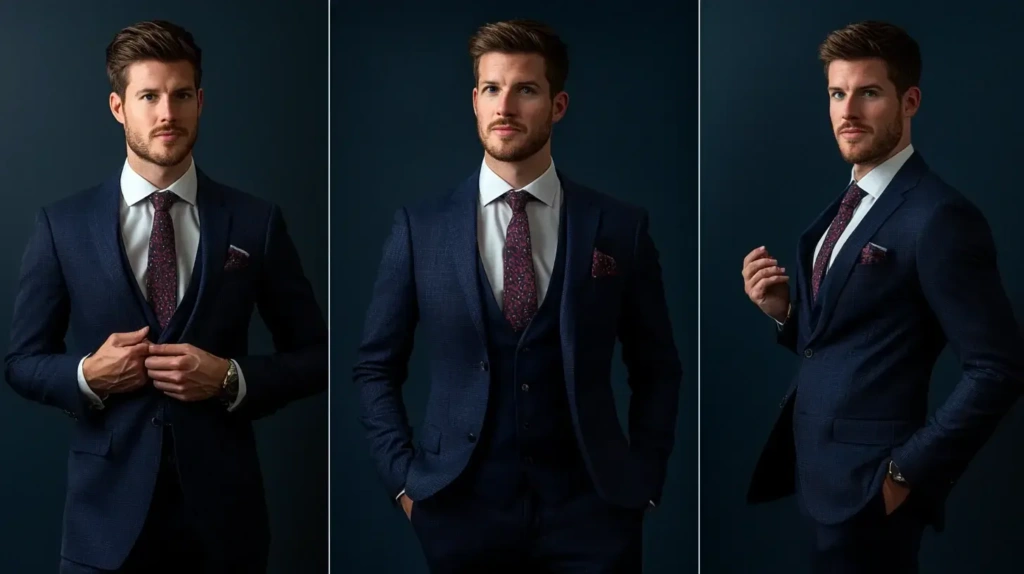
Blazers: A quintessential element in enhancing the Old Money aesthetic, blazers are more than just part of an outfit—they’re a piece of tradition. Whether it’s a classic navy blazer or a subtly patterned tweed, the focus is always on the quality of the fabric and the precision of the fit. A good blazer elevates any ensemble, bridging the gap between formal and casual with grace and style.
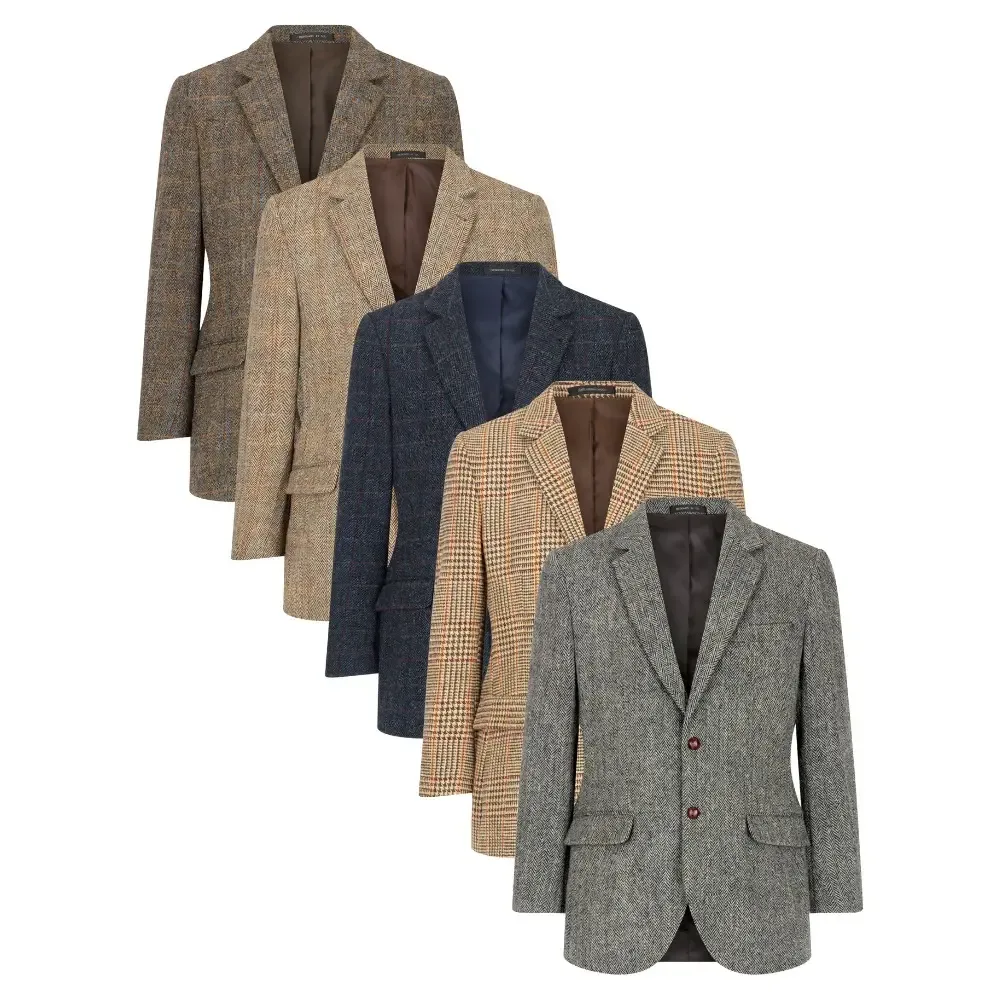
Dress Shirts: No Old Money man’s look is complete without a crisp, well-fitted dress shirt. It’s the backbone of sartorial elegance, often detailed with custom collar styles and refined cuffs. The magic of a good dress shirt lies in its versatility and the subtle yet decisive details that signify quality and refinement.
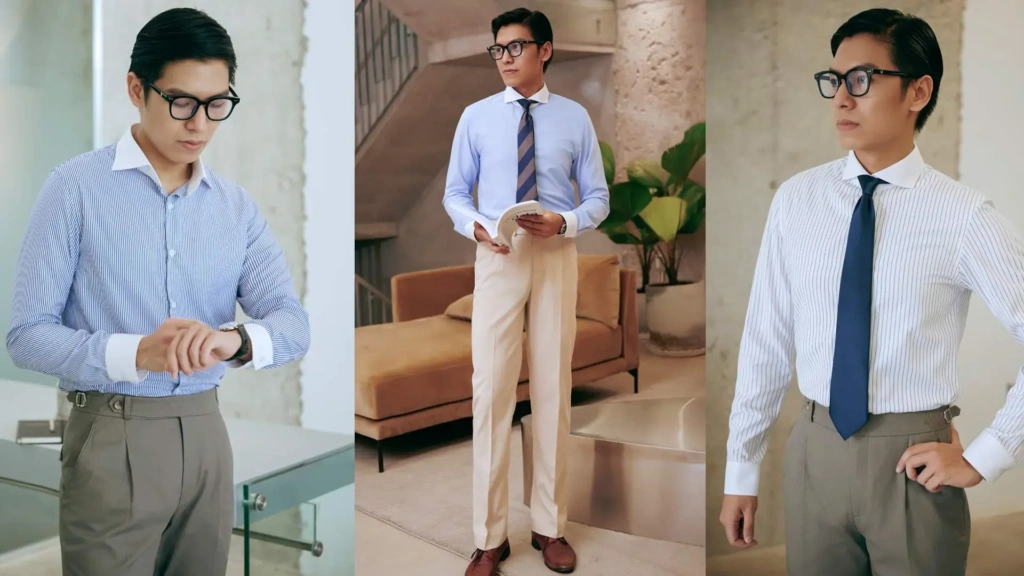
Dress Pants: Tailored trousers are essential for their comfort and elegance. They merge classic style with a modern fit. Whether paired with a blazer or a full suit, the right trousers offer a smooth transition from business to social settings, ensuring you look polished at all times.

Overcoats: Luxurious materials like wool and cashmere define the classic overcoat, an indispensable part of the Old Money wardrobe. Styles like the Chesterfield coat provide not just warmth but a sharp, distinguished look that complements any outfit beneath. The Old Money aesthetic appreciates these coats for their functionality and timeless appeal, making them perfect for any chilly occasion.
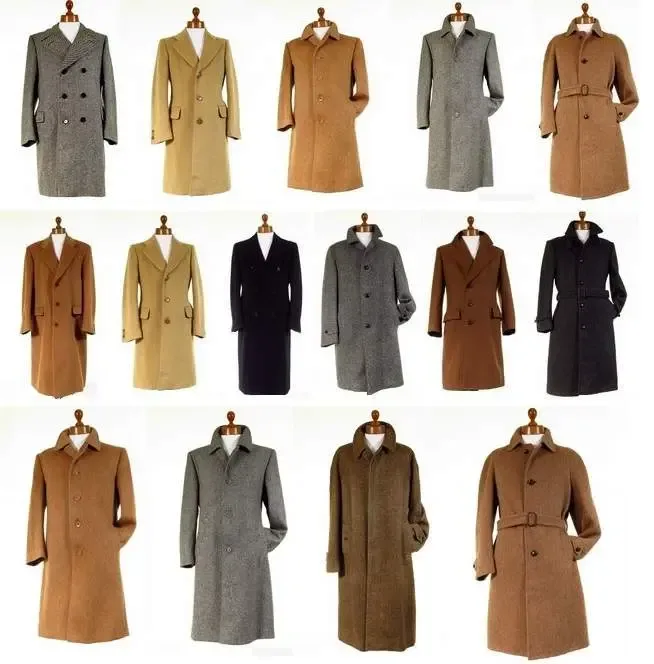
Casual Wear with an Old Money Twist
Polo Shirts:
Polo shirts are the epitome of casual elegance, effortlessly blending into the Old Money aesthetic. Opt for high-quality polos in luxurious fabrics like piqué cotton or silk blends, which provide both comfort and a subtle hint of luxury. The key to Old Money style men is in the details—think classic colors like navy, white, or hunter green, and ensure the fit is just right: not too tight, but perfectly tailored to skim the body. These shirts are ideal for a relaxed weekend outing or a casual meet-up, maintaining an air of sophistication without being overly formal.
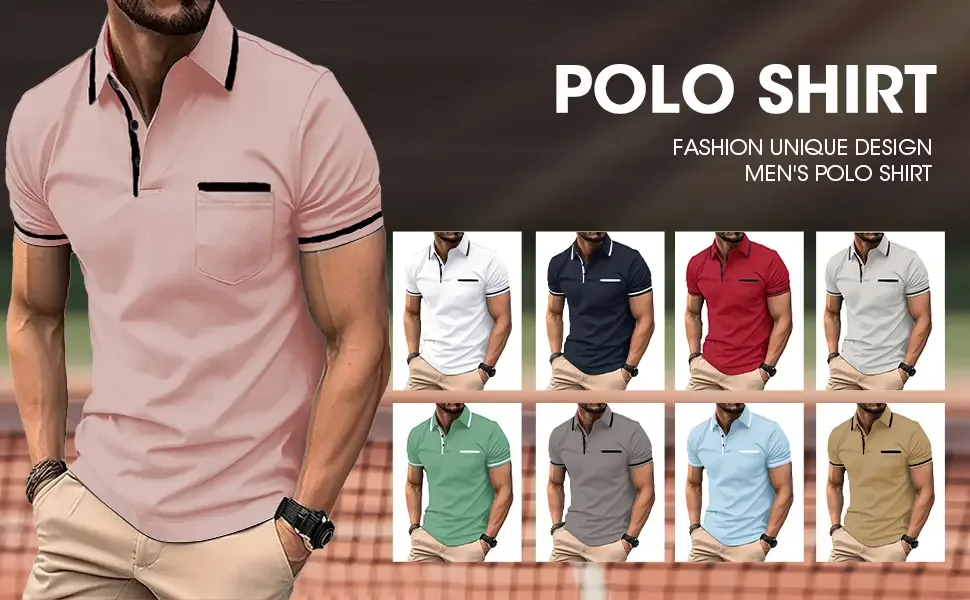
Chinos and Jeans:
When it comes to casual yet refined looks, chinos and jeans are indispensable. For chinos, choose earthy tones or pastel shades that reflect a mature, understated style. Ensure they are well-fitted, sitting comfortably at the waist and tapering slightly towards the ankle to create a clean line. Jeans should be equally considered—opt for straight-leg styles in darker washes to maintain an element of polish. Pairing these with a well-fitted blazer or a soft, knitted sweater can elevate the entire outfit. It seamlessly integrates the relaxed comfort of denim or chinos with the classic Old Money flair.
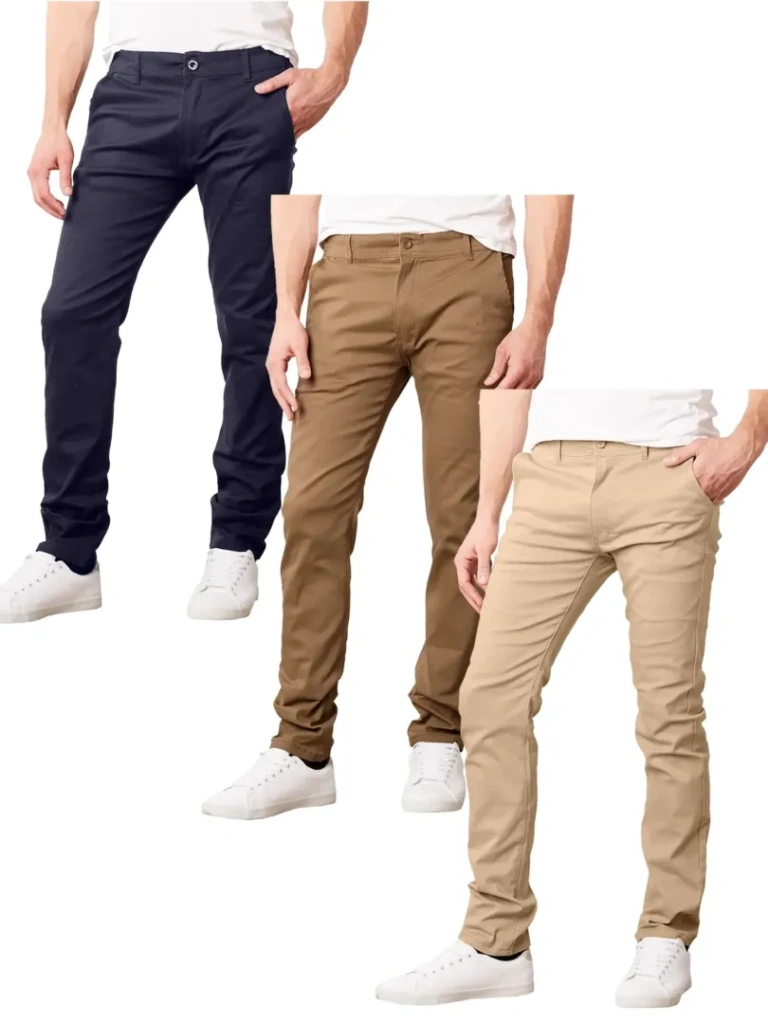
Footwear and Accessories
Footwear:
In the realm of Old Money style, footwear is a cornerstone of elegance. The focus is on polished leather shoes that denote sophistication and status. Classic loafers, often in supple leather or suede, are a staple for both their comfort and their versatility. They can transition smoothly from office wear to casual gatherings. For more formal occasions, Oxfords or brogues in dark, understated hues are preferred, reflecting a clean and refined appearance. On colder days or for more rugged settings, a pair of well-made formal boots can be appropriate.
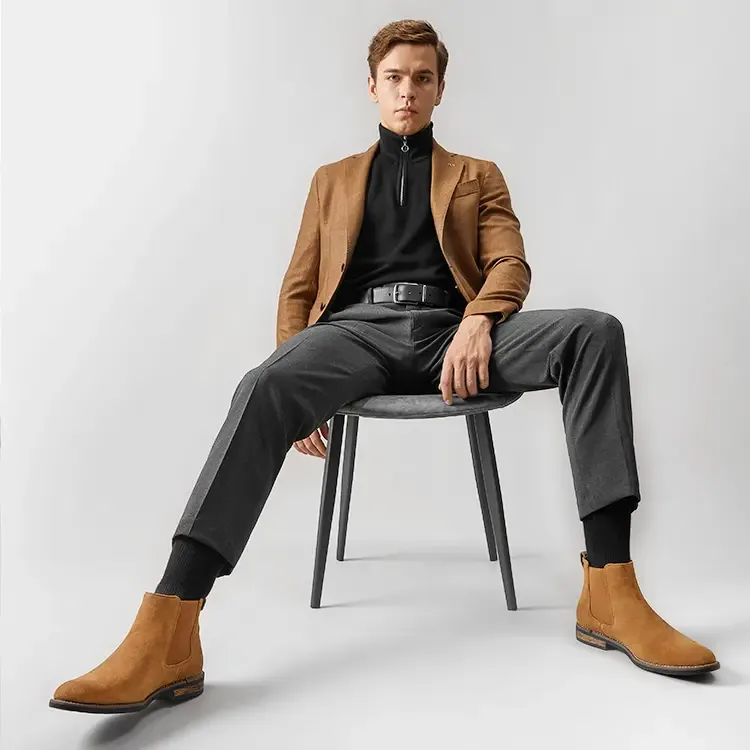
Accessories:
Accessories are pivotal in the Old Money aesthetic, acting not just as complements to an outfit but as subtle indicators of refinement and attention to detail. Ties, whether silk or knitted, should harmonize with the overall color scheme of the outfit . Cufflinks offer a nod to personal craftsmanship, often bespoke and made from precious metals or stones. Pocket squares add a dash of color and flair to a blazer or suit jacket and should be chosen to either neatly match or tastefully contrast with the tie. Watches remain a functional yet stylish accessory, ideally minimalist in design but of the highest craftsmanship.
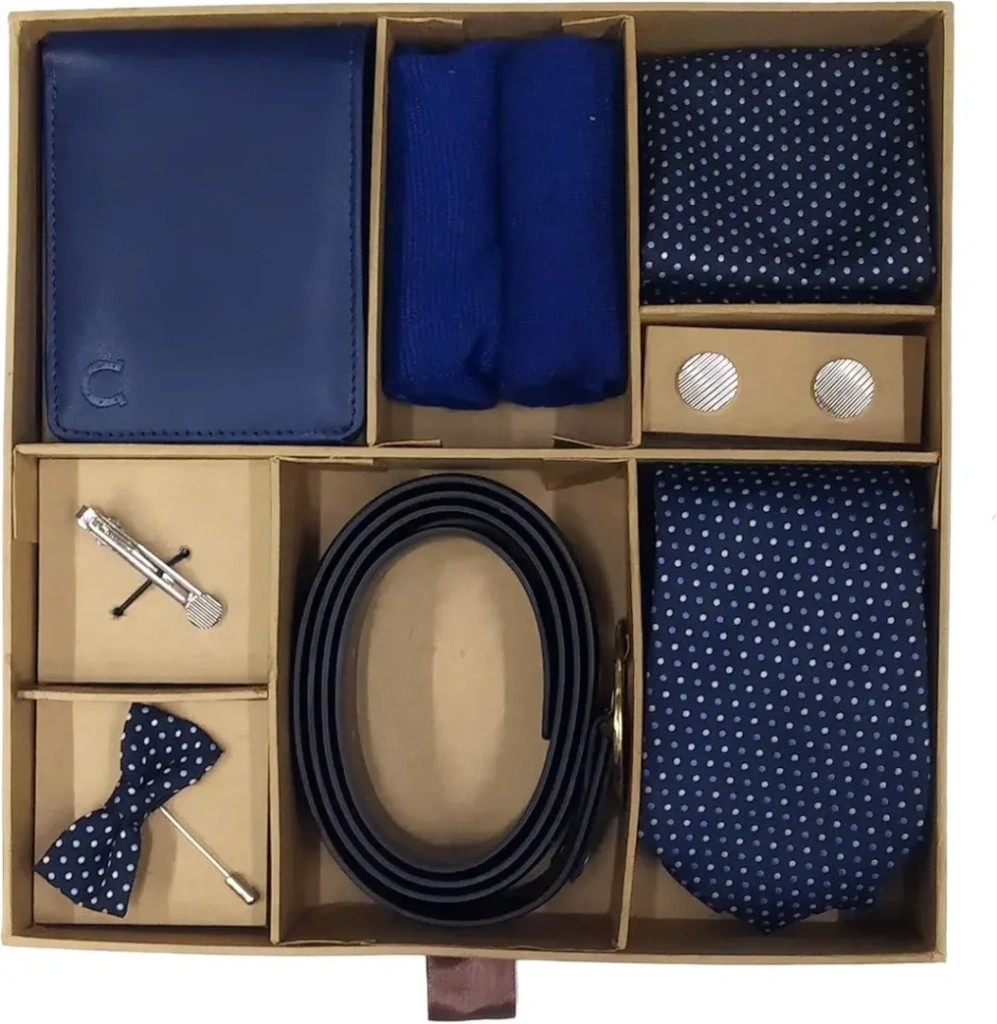
Tailoring and Personalization
Importance of Bespoke Tailoring:
The Old Money aesthetic prioritizes a perfect fit, which can only be achieved through bespoke tailoring. This traditional craft involves creating garments that are custom-fitted to the individual’s body, ensuring that each piece not only fits impeccably but also complements the wearer’s physique. Bespoke tailoring allows for adjustments that ready-to-wear clothing cannot offer, such as altering the length of sleeves, the drape of the fabric, and the positioning of seams. This meticulous attention to fit not only enhances the comfort and movement of the wearer but also elevates the overall appearance of the clothing to reflect true personal style and sophistication.
Personal Touches:
Personalization in the Old Money wardrobe extends beyond the fit to include elements like monograms and custom details that reflect individual style while adhering to the aesthetic’s understated elegance. Monogramming, for instance, can be subtly placed on shirt cuffs or the inner lining of jackets, serving as a discreet signature of ownership and heritage. Custom fittings might also involve selecting unique fabric patterns, button materials, or even lining colors that allow the wearer to express personal taste without straying from the classic look. These personalized details ensure that each garment is exclusive and a true representation of the wearer’s identity and stature.
Maintaining the Look
Grooming Tips Tailored to the Old Money Aesthetic:
Grooming is an essential component of the Old Money look, reflecting an image of clean sophistication and timeless appeal. For men, this means well-manicured hair, typically kept in a classic, neat style that complements the overall conservative fashion aesthetic. Regular visits to a trusted barber are advisable to keep haircuts sharp. Facial hair, if any, should be well-trimmed or styled to maintain an elegant appearance. Skincare is also crucial; a simple, no-fuss routine using quality products can preserve the skin’s health and enhance one’s looks.
Advice on Wardrobe Maintenance:
To ensure the longevity and timeless appeal of an Old Money wardrobe, proper care and maintenance are critical. Invest in good quality hangers to maintain the shape of your suits and coats. Garments should be cleaned according to their specific care instructions—usually, dry cleaning for suits and blazers to preserve their form and fabric integrity. For knitwear, gentle hand washing or professional cleaning will help maintain its look and feel. Additionally, storing clothing in a cool, dry place away from direct sunlight can prevent fading and fabric degradation. It’s also wise to rotate your wardrobe regularly to wear clothing evenly and avoid overuse of favorite items.
Cultural and Contemporary Influences
Interaction with Modern Fashion Trends:
The Old Money aesthetic continues to influence modern fashion by emphasizing quality and sustainability—concepts increasingly valued in today’s fashion landscape. While the core of old money outfits remains conservative, they subtly incorporate contemporary trends through updated silhouettes or the integration of new textures and materials. For instance, classic pieces like the tweed blazer or leather loafers are often reimagined with modern cuts or eco-friendly materials. This reflects a blend of historical richness with contemporary ethical fashion practices.
Influence of European Style
European fashion, known for its sleek, tailored looks, has a significant impact on the Old Money aesthetic. This influence is particularly evident in the emphasis on perfect fit and fine materials, traits celebrated in both European and Old Money styles. The typical European attention to detail, from the precision of a garment’s construction to the choice of fabric, resonates with the Old Money philosophy of understated luxury. Italian suits, French couture, and British tailoring all contribute elements to the Old Money wardrobe, each adding a layer of sophistication and cultural depth that enriches its classic appeal.
Conclusion
The Old Money aesthetic embodies more than just a style; it represents a legacy of elegance, quality, and subtlety. Rooted in historical richness and refined through generations, it stands out through its emphasis on classic silhouettes, impeccable tailoring, and a preference for materials that age gracefully. This aesthetic isn’t flash. Instead, it’s characterized by an understated luxury that whispers status.
Final Tips on Embodying This Style in Everyday Life:
- Invest in Quality: Choose garments that are well-made from high-quality materials. These pieces last longer and often look better with age.
- Keep it Tailored: Ensure that everything you wear is well-fitted. Tailoring is crucial to achieving the Old Money look, which prizes a neat and orderly appearance.
- Mind the Details: Pay attention to the small things—polished shoes, a well-chosen tie, a crisp pocket square. These details can elevate a simple outfit to something special.
- Embrace Subtlety: The old money outfits eschew bold logos and garish colors for subtle patterns and neutral palettes. Elegance is key, and less is often more.
- Maintain and Preserve: Regularly care for your clothing and accessories to maintain their appearance and extend their life.
